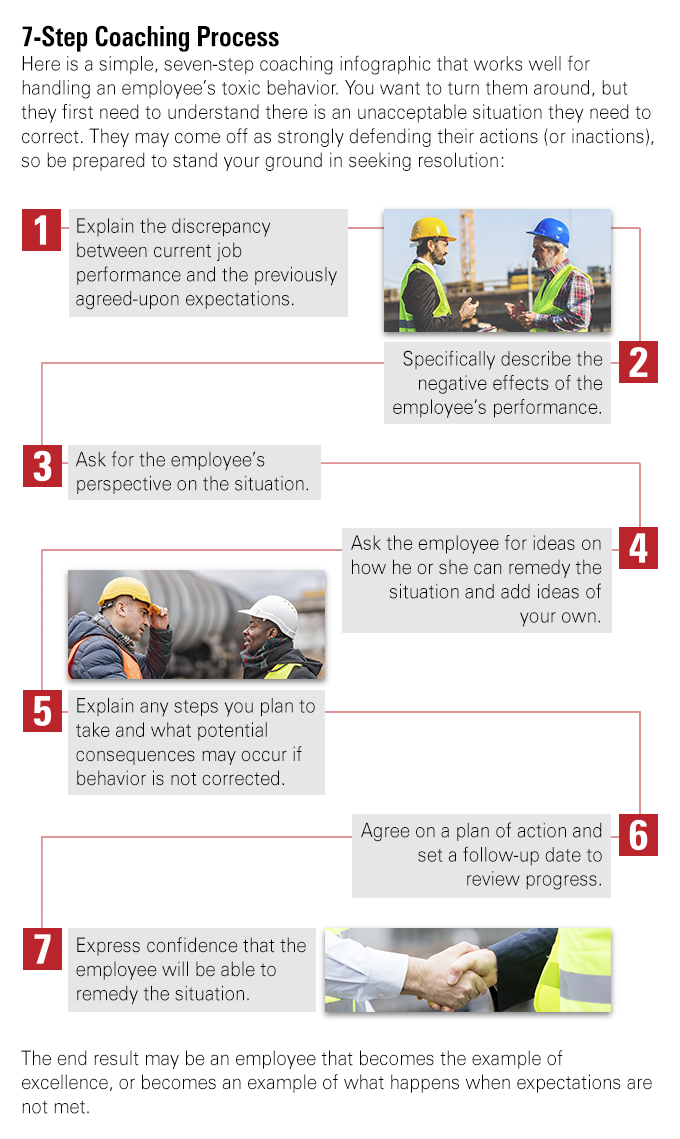Steps to take to remedy negativity in the workplace
By Preston Ingalls
Often referred to as “bad apples,” or as the French would say, pourri, chronic complainers tend to be self-absorbed and not mindful of the effects of their negativity on their peers, customers, or others. Over time, they become toxic employees and drain the energy from the team, affect morale by playing off imperfections to draw attention to themselves. They see the need to share their discomfort or dissatisfaction with others. I believe instead of getting up out of bed, they fall out in order to start their day.
Their motivations may stem from unhappiness with their personal life, a perception there is an imbalance between what they deserve and what they are provided, a search for attention (negative attention is still attention), or their general mindset is skeptical and pessimistic in nature.
Sometimes, they put people down in order to feel superior to them. They may act out aggressions due to ego needs, or they simply see life differently than most (the glass half-empty). Regardless, their influence can have a serious undesirable impact on other team members and create a toxic environment. According to the U.S Bureau of Labor Statistics, this type of negativity costs businesses more than $3 billion a year due to its damaging effects.
Dylan Minor, an assistant professor at the Kellogg School of Management, studied the topic of toxic employees. She says, “I call them toxic because not only do they cause harm but they also spread their behavior to others.” According to Minor’s research, people close to a toxic employee are more likely to become toxic themselves. Like the proverbial “bad apple” in the bunch, the basket of good apples is spoiled by its contact. As the apple oxidizes and turns, it causes a reaction with each apple with which it comes into contact. This toxicity begins to grow and fester and, if unaddressed, can severely impede an organization’s mission and effectiveness.
One of our roles as a leader is to prevent negativity. Let’s examine how to correct it.
RECOGNITION
The first step is recognition or seeing the problem. Have several people complained about this person? Do you see a trend of negative reactions and statements regarding work, workplace conditions, decisions, etc.? Have you noticed or heard that in meetings they become a naysayer who criticizes every idea on the table? They may even justify it by claiming to play “devil’s advocate.” The pourri is usually somewhat evident in their outward behaviors.
Recognizing the symptoms of a toxic employee is the first step in addressing it. If it seems there is a problem, it is because there is a problem—act on it as a leader.
ISOLATION
This is a stopgap, but you may want to isolate this person from others they are affecting. First, it will stop the “oxidation effect,” and second, it sends a message to them and others that toxicity is unacceptable. This is a containment effort but not a cure-all. This is more of a temporary countermeasure and is not a long-term solution. However, occasionally you have to stop the bleeding before you heal the wound.
COACHING
Sometimes the culprit may not understand the negative impact their behaviors have on their team members or customers. Sometimes they clearly do. Either way, they need to become aware there is an issue, its impact on others, and most importantly, the unacceptableness of those actions. The intent is to stop undesirable behavior/results by emphasizing impact of poor performance. Remember the old adage, “I don’t care about your attitude, but I do care about your behavior.” It is easier to alter their behavior rather than their attitude.
It is crucial to provide feedback regarding how they are being perceived and why it is unacceptable. Do this in private. They must see the implications of continuing are not an option. Be specific with examples versus general statements. Avoid using “You are always negative” or “You never agree to anything new” or “Why do you always?…”. Avoid the words always, never, etc. It is best to stay away from generalities and stick with specific events.
KEEP A RECORD. It is important that you record these sessions because if a course of action is to discharge them, you want to have a “paper trail.”
REINFORCEMENT
Once you have provided the coaching, it is critical that you follow up to ensure the behavior has changed and you want to reinforce that change with recognition or if the behavior has not changed and you are prepared to elevate to the next step.
If they have made improvement, reinforce it with recognition and words of encouragement. Use statements like, “Charlie, I have seen considerable progress over the last few weeks. Keep it up.” Or, “Linda, we have observed you are more agreeable and helpful in the meetings and it has not gone unnoticed. Good job.” A change in behavior has to become a habit, and it is easier when the change is reinforced.

If the behavior has not suitably changed, consider using a Performance Improvement Plan (PIP) that lays out very specific activities they must perform along with a 30- or 45-day deadline to accomplish it. The good thing about the PIP is it gives them specific steps they need to follow to turn it around and a limited timeline in which to do it. Failure to comply within the deadline should not result in additional warnings; it is time to take action … start the termination process.
Look, you have provided coaching, you gave them tougher guidance and a deadline to change with the PIP, but it has not produced the necessary results. Don’t hold your organization hostage to a chronic toxic employee who will continue trying to rot the barrel of apples. Take action and use the documentation you have gathered to move this bitter element out of the organization.
CLOSING THOUGHT
When faced with a toxic employee, help them to see the world from other vantage points. They need to change the way they look at the job … change the way they do the job … or change jobs.
about the author
Preston Ingalls is president and CEO of TBR Strategies, LLC, a Raleigh, North Carolina-based maintenance and reliability firm specializing in the construction and oil and gas industries. Preston can be reached at pingalls@tbr-strategies.com, or visit www.tbr-strategies.com.
Modern Contractor Solutions, August 2019
Did you enjoy this article?
Subscribe to the FREE Digital Edition of Modern Contractor Solutions magazine.


